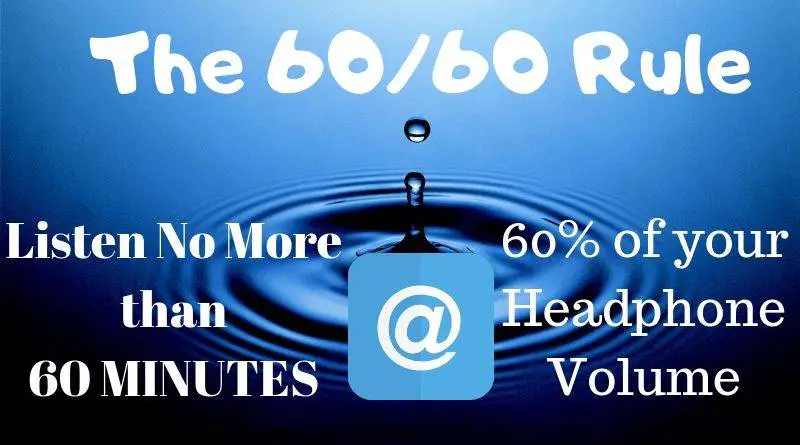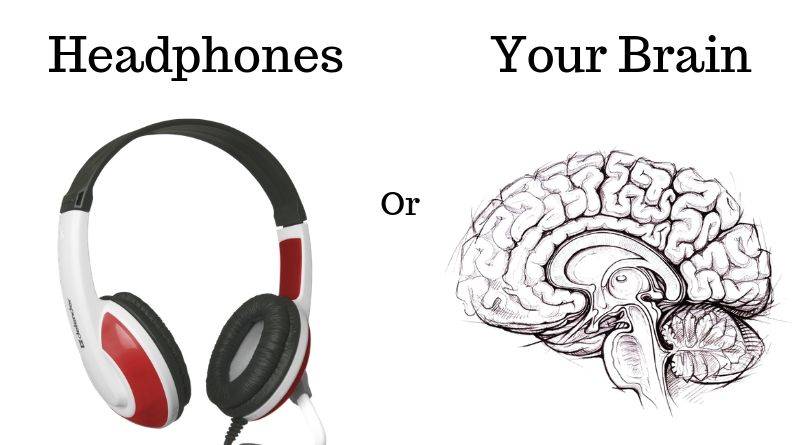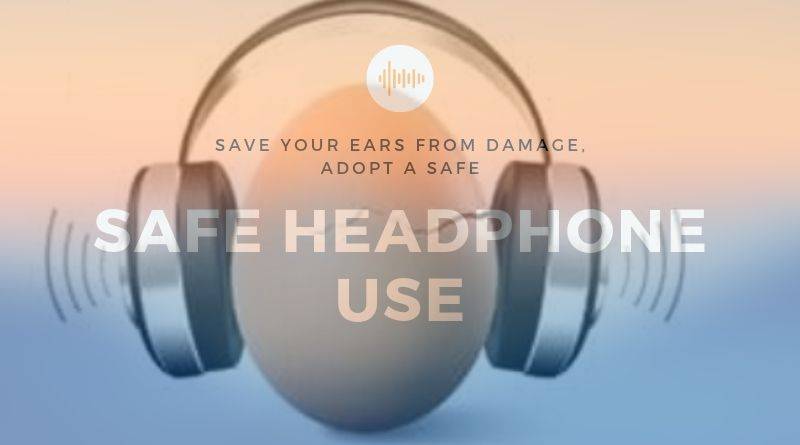Increase in usage of cell phones, iPods and other mobile music gadgets have led to an increase in the use of headphones. Today, headphones have become part of our daily lives. While they are good, if we do not learn how to use headphones safely, we may end up hurting from their use.
Using headphones safely starts with turning the right volume level and avoiding lengthy consistent use. Safe use of headphones also involves selecting the right type and cleaning them regularly. But volume supersedes every precaution. When you listen to sound at higher volumes on headphones, you can easily lose hearing.
It should be noted, extreme headphone usage can easily lead to hearing loss. It exposes ears to sounds which can be harmful to the ears. Therefore, you need to check on how. The hurt is not just on the ears but also our social fabric of socialization.
An example is social problems. There are people who use them for hearing music while others use them as an excuse to help them avoid others. According to recent research findings, the number of people suffering from hearing loss is increasing at a higher rate.
A report by Hearing Health Foundation reveals up to 26 million people living in the United States between the ages of 20-69 do suffer from hearing loss. 20% of the teenagers falling between 12-19 years are reported to suffer from hearing loss that is caused by a loud noise while up to 30 million of United States workers are exposed to hazardous levels of noise on a daily basis.
How to use Headphones safely: 7 vital tips
In How to choose Bluetooth Headphone and earphones, we explore several factors to consider when buying headphones or earphones. While these factors are diverse, safety is key. In this section, let us explore the considerations to make so as to use headphones safely.
1. Select the Right, Safe Headphones
Using the noise cancelling earphones will make one impervious to sound. Use of the noise-cancelling earphones is considered to be a preferable choice for most people listening to music nowadays since it enables them to completely remove the voices distracting them outside when listening to music.
How to Select the Right, Safe Headphones
It is much better when one looks from this perspective but it also makes one unaware of other voices that are important around you. One best way one can use to help in handling such a situation is by using noise cancelling earphone when necessary. However, it is highly advisable not to put on the headphones while on the road.
For instance, the on-ear headphones do rest on the ears while the over-ear headphones do cover the entire ear. Although the in-ear headphones are not of the best audio quality, it is still possible for one to do jumping jacks in them.
2. Use your headphones for a Safe duration
The duration you should listen to music through headphones is another important thing you need to consider. Never use headphones in one sitting for longer periods.
How long is it safe to listen to music through headphones in one sitting?
Not more than 60 minutes. It is advisable that you not extend more than one hour of continuous use of headphones in one sitting. In case you are too addicted to using the headphones, ensure you make it a responsibility of removing the headphones after every 20-30 minutes and have the volume always kept on check.
You can easily damage your ears when you continue listening to volumes on more than 100 Db within 15 minutes. 100 db is very high hence volume does play an important role when you decide to use headphones.
Also, ensure you do not go past 60% of your device volume. Majority of the headphones are known to provide one with a warning when they cross the 60% mark volume. Going past 60% volume can be very dangerous to the ears. This is part of the things we do to master how to use headphones safely and avoid ear damages.
3. Safe Volume for Headphones
Most experts are known to advise headphone users to keep the sound levels between 60-85 decibels in order to help in minimizing the damage to the ears. In case you are listening to music at around 100 decibels, ensure that you do restrict its usage to maximum of 15 minutes. However, these are merely general guidelines since the listening threshold is usually different for every person.
Ensure that you know your safety levels well and protect your hearing well. This knowledge is key to learning how to use headphones safely. People are known to have different levels of volumes where they can hear comfortably.
However, it is highly encouraged to ensure that the sound levels are always maintained between 60-85 decibels. In case you are not comfortable in between those levels, then it is highly recommended that you visit an ear specialist for a checkup.
4. Know when to use headphones, and when not to
Many people do wear headphones just for the sake of wearing. However, most people will wear headphones when listening to music. In the recent past, people have been wearing headphones while jogging, doing workouts in the gym, riding bicycles and others put on headphones to help them ignore other people.
When is the right time to use headphones
There is no right or bad time, but the best is when you want to relax. It is important for one to know the right time to wear headphones. It is never advisable for one to put on headphones when walking on the streets, cycling or driving since they will never hear in case of a beep or horn form of a car of a motorbike
5. Use clean headphones to avoid infection
There are people who are known to share their headphones. First, try imagining sharing a toothbrush with someone? How healthy is that? Would you prefer to ever share a toothbrush with someone? It always sounds to be very affectionate when two people decide to use on a headphone. However, such an act can also be very harmful to the ear.
Is sharing headphones hygienic or infectious?
It is not hygienic. There are high chances of bacterial exchange, which may or may not cause infections. One only way you can use to help in avoiding such harm when sharing a headphone with your friend is to always clean it on a regular basis. You can either use a tissue paper or sanitize it before use to enable you to do away with any type of germs and bacteria that causes infection.
Whenever you are sharing your headphones with your friend, you will be doubling the amount of microbial flora in the years and introducing new bacteria. When you share the headphones and fail to clean them on a regular basis, you can easily result in not only the ear infections but can also give the users ear fungus, swimmers ear, pimples, pustules, blackheads, and ear mites.
6. Apply the 60/60 rule in headphone use
It does not matter if you are using the earbuds or headphones; the logic is that you are piping music directly into your ears which can be of great disadvantage to your hearing. According to recent research findings, most of the cell phones together with MP3 music players are in a position of producing sounds which are more than 120 decibels.
Keeping in mind that a single decibel level of 85 is capable of causing hearing impairment, it will be much easier to see how cranking of your music that loud will be able to quickly damage your hearing.
So, What is the 60/60 rule in Safe Headphone use?
The 60/60 rule basically means an advisory of not listening to music at 60% of the volume for not more than 60 minutes at a time in a day. In order to do away with this issue, most experts do recommend us of the 60/60 rule. By following this rule, you will be in a position to regulate your exposure and preserve your hearing.

It is possible to apply the 60/60 rule to more than just the music that is coming from your headphones. The main aim to try regulates exposure to the sound that can be very damaging. It does not matter if you are working on a noisy site or attending a loud rock concert, always ensure that you do give your ears some break after some time to help in preventing permanent damage.
7. Do not always listen on one earphone
There are people who are known to only use one earphone when hearing music. First, the eardrums do work concurrent and when one is subjected to higher noise levels it can be disastrous to someone’s health.
Can listening to one earphone damage hearing
For sure listening to only one earphone will easily damage your hearing capability since one of the eardrums will not be working on the same level as its partner. This will affect one ear’s hearing levels.
Recent research findings do reveal that people who use one earphone do stand a high chance of suffering from hearing loss and other ear issues more than people who use earphones on both their ears. In the recent past, most teens are known to prefer using only one earphone, this can be of some help especially when out in the streets as the other ear can help in case of some emergency calls.
Other Important Tips to Safe Headphone Use
Noise pollution has really increased in the last decade. There has been a huge increase in the damaging effects of the headphones. When one uses headsets, headphones or the earbuds for longer times with high volumes, there can be permanent loss of hearing. The following are the basic questions that we have answered with regard to safe headphone use.
Are headphones bad for your brain?
Whenever you are listening to the loud and fast music, the sound will always go directly to the brain. The intensity and loudness of sound waves are capable of disturbing brain tissues. This can easily lead to disorders caused by the headphones damaging your ears and brain.

Therefore, when not used well, the headphones can be bad for the brain and ears. It is also capable of affecting the brain tissues thereby causing serious disorders in the long run. According to recent research studies, one of the main causing of brain damage is excessive use of headphones on the ears.
Are wireless headphones bad for your brain?
The trendy wireless headphones are known to fit directly into the ear canal. The close proximity of the Airpods to the inner ear and the brain is capable of raising cancer risks.
Recent research did reveal that around 250 scientists from 40 counties did sign the International EMF Scientist Appeal petition to the W.H.O and the UN warning against the radio wave radiation that comes from the use of the wireless headphones.
Almost all the wireless headphones are known to connect via the Bluetooth by use of electromagnetic energy. The Bluetooth makes use of some forms of low power radio waves. Due to this reality, you are highly recommended that you learn how to use headphones safely to avoid ear damages.
Animals exposed to these forms of radiation have been observed to develop reproductive, genetic, and neurological damage which has become more common in those animals than would be expected.
What is the effect of loud music on earphones?
When loud music is played on the earphones, it pressures the eardrum, which may increase the risk of hearing loss by having the same effect on the nerves just like the several types of sclerosis. Recent research reveals that when levels of noise are above 110 decibels, may strip the insulation from the nerve fibers that transfer signals from the ears to the brain.
Loss of myelin, a protective coating does disrupt the electrical nerve signals. A similar process this time round caused by immune system attack totally damages the nerve in the brain resulting in several sclerosis.
It is a clear fact that the loud noises can cause hearing issues like a temporary loss in hearing or ringing in the ears that is also referred to as tinnitus and at times can also cause a permanent loss in hearing. Actually, this is the first time scientists are in a position to point out damages to the nerve cells as a result of exposure to noise.
Can earbuds cause ear infections?
Earbuds are usually known to carry dirt and bacteria. Since the earbuds are very compact, it is much easier to leave them lying around. Without sanitizing them properly, the earbuds will most probably accumulate a great amount of both dirt and bacteria. Another main reason that affects most of the ears is bacteria production in the ears due to excess usage of dirty headphones.
The productions of bacteria in earbuds that are not cleaned on a frequent basis do increase by up to 700% in just one hour. This does happen since the headphones do cover the ears from the natural air. Any person using the earbuds to listen to music can either feel pain or loss in hearing after some time due to the high bacteria production.
Can dirty earbuds cause infection?
Dirty earbuds will always increase your risk of ear infection. Apart from carrying the bacteria and dirt, the earbuds are capable of increasing build-up of wax in the ears. Since the ears have been designed to clean themselves, wearing the earbuds will trap the wax which is supposed to be removed. Excess build-up of wax will lead to impacted ear wax that will, in turn, affect your level of hearing.
The earbuds are also capable of rupturing the eardrums. Since earbuds have been designed to blast music directly into the wearer’s ear canal, whenever you increase the level of volume, sound vibration usually goes directly into the eardrums. This can easily make the eardrums to rupture which can easily lead to complete loss of hearing.
Can ear buds damage your ears?
When you use the headphones or the MP3 player when it is at 70% of the top volume that’s around 85 decibels there is a high possibility that it can start damaging your ears after just 30 minutes of listening. This simply means that when you turn the volume up and listen to music for longer periods it can easily damage your hearing power.
Noise-induced hearing loss (NIHL) refers to a special term that is used for loss in hearing caused by the earbuds. In the recent past, loss in hearing is spread vastly and fast among kids due to the use of earbuds for prolonged periods of time.
Loss in hearing from the earbuds is a good example of a condition known as noise-induced hearing loss. This type of loss in hearing is becoming a very popular problem among most kids and teenagers.
Are in-ear earphones safe?
In-ear earphones are known to be very great when it comes to external sound isolation. When these headphones are used at reasonable levels of volume, they are known to be a great choice. However, when they are not used well, they are capable of causing lots of damage to the ears.
The mid-range sound is also one common problem when using in-ear headphones. Both the treble and the bass are great but they can easily miss a number of the intricate middle ranges that can leave them with very thing listening experience.
What are the advantages of in-ear earphones?
One of the biggest advantages that come with using in-ear headphones is their portability. They are capable of fitting into your purse or pocket with still some room to spare. They are also known to be less obtrusive when compared to the over-ear and the on-ear headphones. These in-ear headphones do offer high sound quality and are available at affordable prices.
Majority of the high-end models do come with some hard carrying case making it difficult for them to break and much easier to stow hence, one will never have to worry on their being crushed on having to dig beyond the wires in order to get something on their back-pack or purse.
The mid-range sound is also one common problem when using in-ear headphones. Both the treble and the bass are great but they can easily miss a number of the intricate middle ranges that can leave them with very thing listening experience.
Conclusion
Having the good and the bad is normal in life and in-ear headphones do have their share too. It is okay to have your ears plugged on when in the library on gym although it can be hazardous when you use it out on the streets. Not all people are comfortable on having items stuck on their ears and at times they do slide out leaving them with water in the ear feeling.
